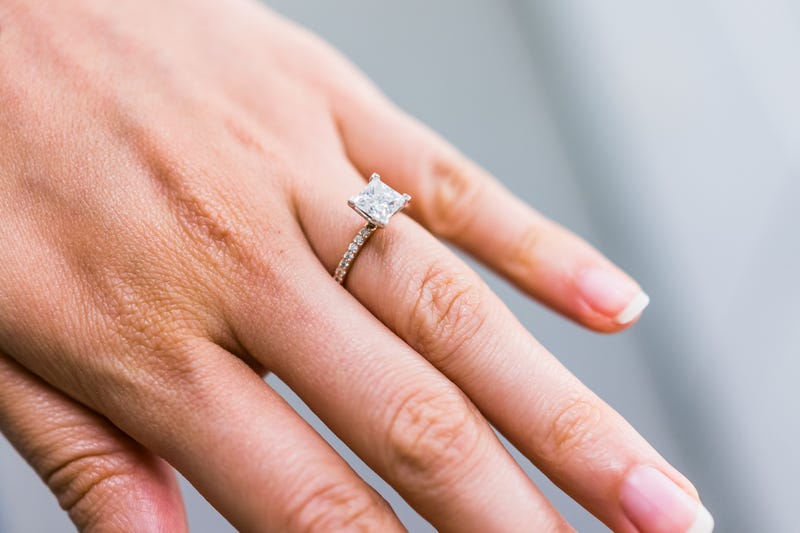
Buffalo, N.Y. (WBEN) - The price of diamonds has seen a substantial decrease over the last few years, with some rates seeing large swings in price since hitting a high point.
With the most popular cut of diamond, round, since Oct. 2016, the price for a 0.5-to-1 carat diamond is down 42%, while a diamond 1-to-2 carats is down 17%. That compared to prices back in April 2022 being up 14% for a 0.5-to-1 carat diamond, and up 41% for a 1-to-2 carat diamond.
Andy Moquin, owner of Andrew's Jewelers points to two issues that are affecting the market right now in the diamond industry: The emergence of lab-grown diamond and its maturity, as well as tariffs.
"Both of those market conditions have created downward pressure in the natural diamond market because of supply. And so because of the supply and the demand for that supply has dropped, the pricing has had to drop as well, just to maintain interest in the natural diamond market," explained Moquin in an interview with WBEN.
What is the difference between a natural diamond and a lab-grown diamond? Moquin says there's really not much of a difference from a molecular standpoint, as they're almost identical. However, the lab-grown diamond is grown in a lab setting.
"Usually what is done is they take a seed, a crystal, and they put it on a plate inside of a centrifuge, and they put methane gas in there and then they super heat it, usually with a laser on a very focused situation. And they can synthesize the actual growing process that takes place in the Earth's crust," Moquin explained.
But what has happened over the last five years, according to Moquin, is the technology and the equipment that is needed to produce lab-grown diamonds has dropped significantly, and more growing facilities are popping up in countries like China, Vietnam and India, making the production process much-less costly.
"The equipment's less expensive, and so you have all these growers that are coming up online now and producing just a glut of supply," Moquin said.
What kind of an effect is this price drop with diamonds having on local jewelers like Andrew's? Moquin says initially, the ability to buy a diamond engagement ring or something along those lines became affordable, and therefore more available and more attainable to the average consumer.
"Initially, it created opportunities. But anytime you have something that can be produced in infinite quantity, it's a race to the bottom. And when I say race to the bottom, I mean as far as the pricing is concerned," Moquin noted. "So what's happened over time is the value of lab-grown diamonds has dropped significantly, and then also it's kind of pulled down the natural market along with it, because there just hasn't been any interest in natural diamonds because the consumer could get so much more for his spend with a lab-grown. So as the prices begin to drop, the profits become smaller, because you're talking about margins on a very, very small number, compared to, let's say, a traditional natural diamond."
In addition to that, tariffs on natural diamonds has resulted in profit margins being very small.
"You have wholesalers, distributors and manufacturers of natural diamonds overseas that are working on, let's say, 10%-to-15%, but the tariffs are 10%-to-15%. It becomes problematic for them, because the tariffs are larger than some of the margins that they actually have on diamonds. So they just are sitting on inventories and just not sending those diamonds out," Moquin explained.
Moquin does believe that eventually, there may see a swing in the other direction, where the consumers become more interested in natural diamonds once again, and the interest in the lab-grown market will begin to fade.
"We'll see the volatility in both segments - the natural market and the lab-grown market - are going to level out and sustain itself. You'll see a correction, and then I think long-term, it'll be better for our industry," he said. "We're going through a transition period where, in the beginning stages, there was huge opportunities for retailers to capitalize on the extreme interest in the lab-grown market and the profitability that was there. But now, as the prices are beginning to drop in both areas, natural and lab-grown, there's less opportunity for us to earn the profits that we were earning prior.
"One of the two are going to survive. In my estimation, the lab-grown market is going to start to fizzle out, and then we'll see increased opportunities back in the natural market, which has proven to be more sustainable. It's a 150-year old industry, so I think long-term, things will be better. Short-term, it's going to be a bit rocky."
